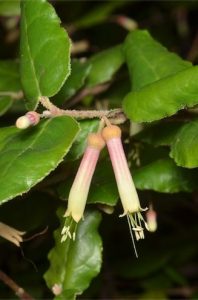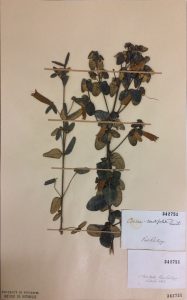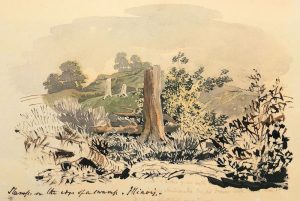

Before he came to Port Phillip in 1839, La Trobe had had a full life as a travelling botanist. This ‘other life’ came to fruition during his first years in Neuchâtel, Switzerland. From his arrival there in 1824, his mountain rambles with Pastor Samuel Studer had a significant influence on him: Studer mentored him as they collected specimens of the alpine flora.
Throughout his subsequent journeys in North America, Mexico and the West Indies, La Trobe was encouraged by the Count de Pourtalès to collect specimens to be placed in the museum in Neuchâtel. His travel books often refer to his joy in observing and collecting the flora he saw.
He also sent specimens to Pastor Studer, who had links with members of the scientific community in Switzerland. Studer forwarded La Trobe’s specimens to Carl Meissner and other eminent botanists. The many hundreds of specimens La Trobe sent to the Museum of Neuchâtel were transferred in 1918 to the Herbarium of the Institute of Biology of the University of Neuchâtel.
After productive plant-collecting in North America, Mexico and the West Indies in the 1830s, La Trobe was active in collecting plants in Port Phillip in the early 1840s. Some of the plants he sent to Studer were named after him by Meissner – Acacia latrobei and Grevillea latrobei, both collected in 1842. Other plants were also named after him: Eremophila latrobei was named by Ferdinand Mueller. By 1847 Meissner had created and named a new genus ‘Latrobea’.

But as La Trobe’s duties became more demanding he had less time for plant collecting. He transferred this interest in the natural world to a passion for gathering interesting plants in his garden. Plants were sent to him from the Sydney Botanic Garden, from his friend Ronald Gunn in Tasmania, and from Macarthur’s Camden Nursery near Sydney. He took solace in his garden, a refreshing distraction from the weight of official turmoil. On his return to England in 1854, he was in touch with Sir William Hooker at the Royal Botanic Gardens Kew and he remained in correspondence with Mueller.
La Trobe’s botanical legacy lives on – in the many plants he collected held in various herbaria around the world, in those named after him, and the fact that Victoria, with its beautiful botanic gardens, became known as the Garden State.
